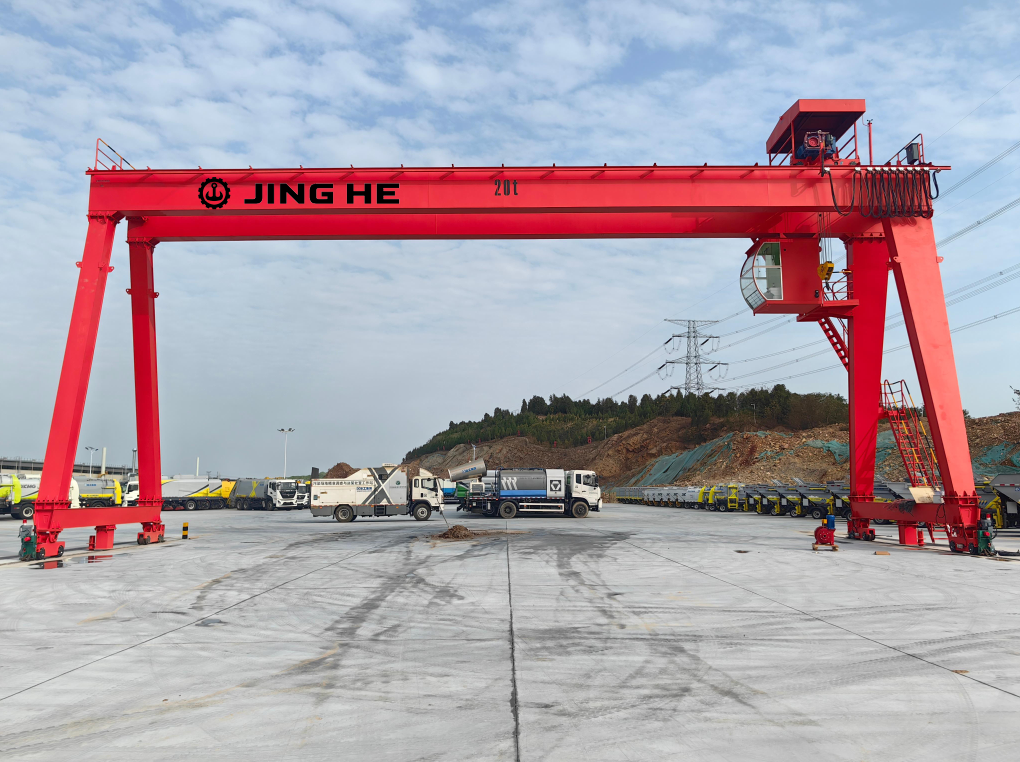Crane Operating Mechanism and Bridge Structure Overview
In crane operations, the typical configuration employs four active and driven wheels. However, when handling heavy loads, the wheel pressure can be alleviated by adding more wheels. For cranes with more than four wheels, it’s essential to incorporate an articulated balancing frame, ensuring the load is evenly distributed across each crane wheel.
The bridge structure of cranes is primarily composed of a main beam and an end beam. These crane bridges come in two types: single-beam bridges and double-beam bridges. A single-beam crane bridge features one main beam with end beams on either side, while a double-beam crane bridge includes two main beams along with corresponding end beams.
The main beam of a crane is securely connected to the end beam, and wheels are positioned at the end beam’s ends to support the crane on elevated tracks. Rails are welded onto the main beam to allow the hoisting trolley to move smoothly. Several types of crane bridge main beam structures exist, including box-type, four-truss, and hollow truss structures.

Box Structure Crane: Versatility and Functionality
The box-type crane structure includes several variants, such as the straight-track box double beam, off-track box double beam, and off-track box single main beam. The straight-track box double beam crane is a widely used basic form, composed of upper and lower flange plates with vertical webs on each side. The trolley rails are positioned along the centerline of the upper flange. This crane structure is cost-effective to produce in batches, though it results in a higher deadweight.
The off-track box double beam and off-track box single main beam cranes feature cross-sections with unequal thickness in the main and secondary webs. The trolley rails are mounted above the main webs, with a simplified design that omits short stiffening plates. The off-track box-shaped single main beam crane uses a wide flange box for one main beam instead of two, providing a lightweight structure but requiring more complex manufacturing.
Four-Truss Structure: High Rigidity, Large Dimensions
The four-truss crane structure is made up of four flat trusses that form a closed, spatial framework. The upper truss surface typically includes a walkway. This design is notable for its light weight and high rigidity, though it has larger dimensions and requires more complex manufacturing. Additionally, its fatigue strength is lower than other crane designs, leading to less frequent production.
Hollow Truss Structure: Efficiency and Lightness
Similar to the off-track box-shaped main beam, the hollow truss structure crane is composed of four steel plates creating a closed shape. The main web consists of a solid I-beam, while the other plates are designed with cut-out windows to form a hollow truss devoid of diagonal bars. Both the upper and lower truss surfaces are equipped with walkways, and the crane’s operational mechanism and electrical components are housed within the bridge. This crane design is light, rigid, and widely used in China due to its practical benefits.
Simple Beam Bridge Cranes: Compact and Cost-Effective
The simple beam bridge crane, also known as a beam crane, is an efficient solution for light-duty operations. It has a structure similar to that of a standard bridge crane, but its lifting capacity, span, and working speed are smaller. The main beam consists of simple cross-sections made from I-beams or other steel shapes combined with plate steel. A hand-pulled or electric hoist is installed with a basic trolley that runs along the lower flange of the I-beam. These cranes can either run along an elevated track or be suspended below the elevated frame, in which case they are referred to as suspended beam cranes.

